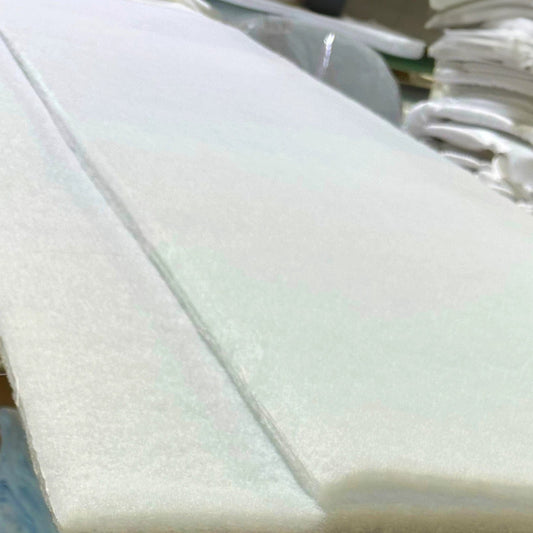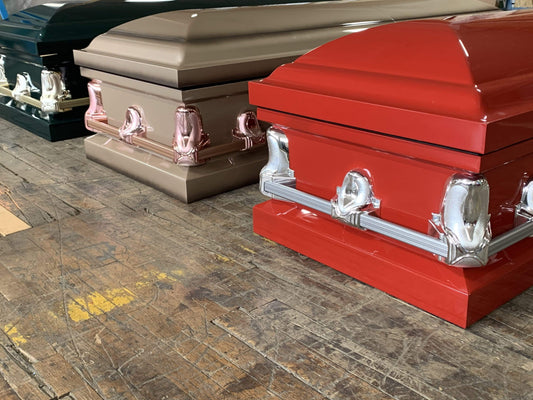Laying A Casket
You may be interested in the burial procedure or be preparing to bury a loved one and would hence want to know how a casket is lowered into the grave. After all, a funeral casket typically weighs 150–200 pounds. When you add it to the body's weight, you have a weight that is quite difficult to move. Gravediggers utilize sophisticated equipment to successfully lower a casket in the ground without tampering with it or disturbing the deceased. The appropriately termed "casket-lowering mechanism" maintains the casket's weight and enables it to slide down into the grave smoothly.
7 Steps To Lower Caskets Into The Ground
You may want to know what will happen if you decide to attend a burial ceremony. Even if you aren't planning a funeral, you may just want to understand how the ceremony goes. In any case, it's wise to consider the casket-lowering process in these seven steps.
- Preparing The Grave: A gravedigger must construct a proper grave before a casket may go to its last resting place in the ground. What then constitutes an appropriate grave? The best method for preparing a burial ground truly depends on where it is. According to US law, there are no requirements for grave depth or size, therefore, each state is allowed to establish its own rules. Many states merely require that the top of the casket be at least three feet below ground level, contrary to the expression "six feet beneath." And as a result, the depth of the grave as a whole changes according to the height of the actual casket.
- Installing The Burial Vault: Installing the burial vault is often another step that must be taken up before putting down a casket. Concrete now serves as the primary material for burial vaults and grave liners. They come in two pieces: a rectangular container and a lid. The casket is placed within the vault, which fits snugly inside the grave. The vault lid is placed on top after the casket is in position. An alternative method is putting the casket in the vault above the ground before lowering the whole structure into the ground. The goal of a vault is to prevent the subterranean movement of caskets. They also assist in keeping animals away from the casket and the remains. Vaults are also helpful in stopping the spread of very infectious viruses.
- Arranging The Casket-Lowering Device: The funeral home crew puts up the casket-lowering apparatus after the burial place is prepared. If there is a graveside ceremony, they make sure to accomplish this before the family shows up there. The funerary workers will still utilize a casket-lowering mechanism to bury the casket even if you aren't performing a graveside ceremony.
- Placing The Casket On The Device: The casket is often carried by the pallbearers to the cemetery if there is a graveside ceremony. Otherwise, the cemetery workers and morticians could carry out this task. First, they meticulously line the casket with the ground before fastening it to the straps. Finally, the casket is held suspended above the grave by solid ropes.
- Lowering The Casket: It's now time for the casket to be buried in the grave. To release the device's internal gears, a member of the funeral home personnel presses a button or pulls a lever. Next, the device's side spools revolve slowly, releasing the straps and enabling the casket to fall at a regulated pace.
- Taking Off The Straps: The personnel must take the object out of the casket once it has been buried. Quite often, the family departs before this occurs. The straps must first be removed so they may be placed under the casket. This poses a practical issue: how do you draw the straps from underneath such a large and weighty container? Funeral homes often request that the cemetery build a small mound or ridge of the earth at the base of the burial or vault. The straps, which rest near the ends, are more straightforward to remove since the center of the casket is raised as a result. For this reason, some cemetery vaults even include a series of "bumpers" that keep the casket slightly lifted above the vault floor.
- Breaking Down The Device: The funeral home workers may disassemble the remainder of the apparatus in the reverse order that it was assembled after the straps have been removed from the grave. To make the object simpler to move, it often telescopes together.
After The Casket Is Lowered Into The Ground, What Happens To It?
The vault's top is set in place by the cemetery or funerary workers once the casket has been lowered into the grave. They may do this by using the same casket-lowering device. After the casket is buried, the grave liner's sides are lowered if the family does not opt for a vault. The casket is then covered by placing the top in position. To seal the grave, the cemetery fills it with soil and then grows green turf over the top.

![Upgrade to Premium Weight [18-gauge steel]](http://titancasket.com/cdn/shop/products/casketthicknesswithnumbers.png?v=1680642906&width=533)



